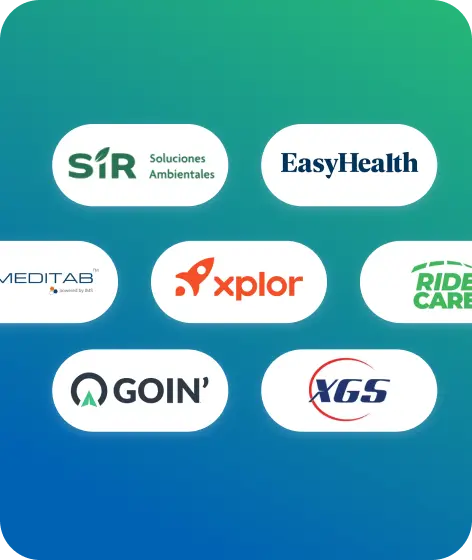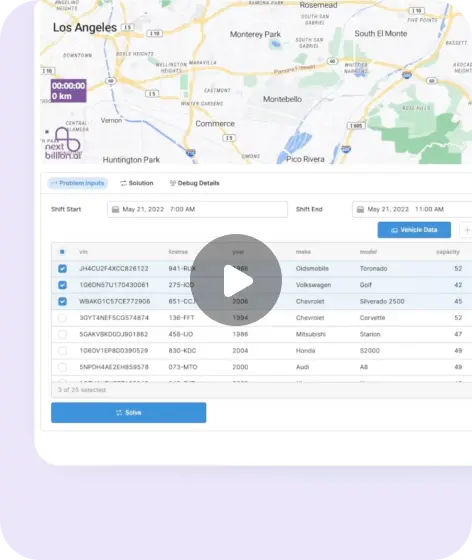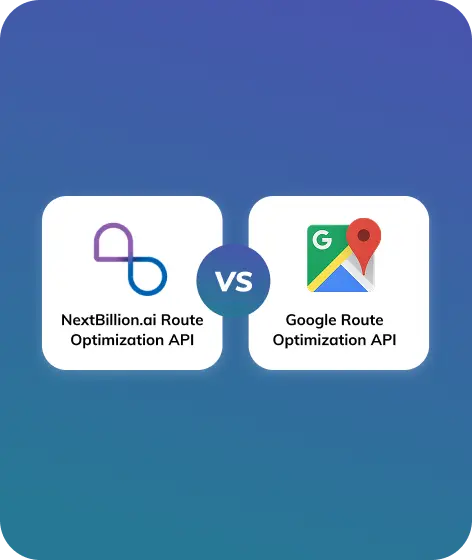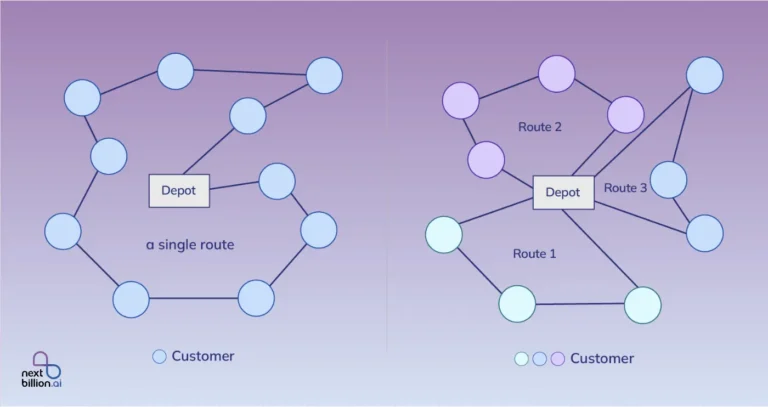
Table of Contents
According to a survey conducted by AlixPartners, customers want home delivery within 3.5 days in 2024. If retailers fail to meet these needs, ~25% of customers will switch retailers.
This is why understanding and optimizing for on-time delivery is crucial. Not only will it give you a considerable advantage over your competitors, but it will also help you improve your customer loyalty through a superior customer experience.
In this article, we’ll go over the key on-time delivery challenges, metrics, and how you can ensure product delivery on time.
What is On-Time Delivery?
On-time delivery is a performance indicator that assesses the effectiveness of your delivery system. This metric shows whether or not a business is fulfilling the shipment order within the promised delivery time and date.
The on-time delivery rate is defined as the total customer orders shipped on or before the requested delivery date divided by the total number of deliveries. The total number of customer orders shipped before time would mean subtracting the deliveries that were delivered late from the total order or the deliveries that never made it to the customer. Here’s the formula:
[Total Deliveries – (late deliveries + missed deliveries)/ Total Deliveries] * 100
The definition can vary depending on performance criteria. Some shippers tend to be very specific and consider timely delivery to be accurate down to the minute. Others may consider the arrival of a product on a specified day to be delivered on time.
Why is On-Time Delivery Important?
It’s a customer-facing metric. It’s the first impression that your customer forms of the delivery experience, and therefore is a critical factor for customer retention.
According to Statista, 30% of global shoppers expressed a desire for healthcare, pharmaceutical, and financial products, among others, to be delivered within 2 hours, while 50% expected these items within 24 hours. The writing is on the wall for everyone to see. Customers don’t really care about supply-chain issues. They care about getting their products delivered to them within the specified time window.
In the case of late deliveries, the team has to chip in with more support and spend more effort into retaining customers. Late deliveries would mean an extra strain on the support team who’ll have to work overtime to ensure the customer complaints are properly handled.
If your order pipeline is full, failing to deliver a product on time could cause a delay among your other deliveries too, cause they’ll have to be rescheduled and completed at a different time.

What are the key On-Time Delivery Challenges?
1. Inventory Management
If teams don’t keep a vigilant eye on the inventory, customers could place orders for products that simply aren’t available. This could lead to long lead times and unavoidable delays, which could lead to customer complaints or, worse, cancellations.
As you can see from the graph below, one of the biggest problems impacting online shopping behavior is the inability to buy a product due to it being out of stock.
2. Inefficient order fulfillment processes
In 2024, according to Statista, retail e-commerce sales are estimated to exceed 6.3 trillion US dollars worldwide, and this number is only expected to go higher. With that in mind, companies need to focus on the efficiency of the eCommerce fulfillment process.
The fulfillment process would include steps like picking the items, preparing them for shipping by packaging them and sending the shipments to the courier or delivery service. A delay in this process would make on-time delivery highly unlikely.
Climate changes and geopolitical events have only added to the disruptions to global shipping, which manufacturers are reporting to be causing increasing delays in the supply of inputs to factories, according to a report by S&P Global.
3. Resource Issues
A common problem to on-time delivery is the travel distance. According to a study done by Kibo, 37% of orders shipped from fulfilment centers within 300 miles of the customer ended up arriving in 5 days or less. This data point makes one thing clear: to optimize shipping times and distances you would need a strong network.
A stronger network would allow you to tap into your partner’s distributed dealer locations to reduce shipping distances to your customers. Reduced shipping distances would lead to reduced shipping costs, which in turn would lead to a boost in customer satisfaction cause they would end up saving money in this process.
4. Other problems with the delivery itself
A lot can go wrong on the delivery route. Delivery times can be affected by various things like traffic jams along certain routes and wrong addresses given by customers. Planning the route is a necessary step that ensures drivers can get as many packages delivered as possible in minimal time.
Unnecessary detours can be eliminated through the use of mapping software that takes current road conditions among other factors affecting common goods.
5. Visibility Issues
Lack of real-time visibility is a common delivery bottleneck. For example, NextBillion.ai customer ZUS Coffee delivers close to 30 cups of coffee every minute, so an optimized dispatch and order allocation system was crucial to ensure accurate, on-time doorstep delivery at scale.
Prior to using NextBillion.ai, ZUS Coffee was working with a provider whose poor map data quality computed inaccurate travel time and distance estimates, leading to inaccurate ETAs and delayed deliveries. With NextBillion.ai’s Distance Matrix API, ZUS Coffee had access to relevant and fresh map data. They were also able to generate accurate ETAs by factoring in multiple variables like driver preferences and behaviors, business-specific use cases, traffic rules and regulations, waypoints, road/routing attributes, vehicle type, and temporary and permanent restrictions.
Different types of On-Time Delivery KPIs
- Delivery Cycle Time: This metric refers to the time from the moment someone places an order to the moment it is delivered. It takes into account the time to prepare the order, time it took to pack up the order, and the time it took to send the order.
- Average Dwell Time: It refers to the time spent by your drivers at each stop to complete the delivery. You can calculate it by dividing the time at stop per delivery divided by the time spent on all the deliveries. Accurate geocoding is one of the best ways to bring down this metric considerably.
- Delivery In Full On-Time (DIFOT): This metric refers to the deliveries that were made on time by assessing the inclusion of all the accurately ordered products in the shipments.
- On-Time In-Full (OTIF): Similar to DIFOT, OTIF assesses on-time deliveries by emphasizing specific order lines instead of the entire order, on the condition that the orders are accurate and complete.
- Idea Order Fulfillment Rate: This metric goes beyond DIFOT by taking into account the condition of the order alongside on-time and complete deliveries, including the accuracy of any supplementary documentation and its integrity.
- Inventory Turns: Inventory turns refers to the rate of how quickly the inventory is replaced, sold, or used.
Steps to Improve On-Time Delivery Rates
According to MetricHQ, an On-Time Delivery (OTD) rate of 95% and above is considered great. This means a company delivers its goods on or before the promised delivery time window at least 95 times out of 100.
Companies in more competitive sectors might aim for a close to perfect OTD rate of 99% or even 100%. Here are a couple of steps you can take to hit that mark:
Step 1. Improve Visibility
A large chunk of the shipping costs are incurred during last-mile delivery. A good way to bring down the costs in this stage is to make it more visible and automated. Having a clear idea of where your orders are at all times and automating as many steps as possible could help you get the OTD rate close to the benchmark.
With machine learning capabilities, a business can get a better idea of what’s going on behind the scenes and the reason behind delivery delays.
Step 2: Optimize Routing and Dispatch
Next, you need to optimize your routing and dispatch. Delivery routes need to be dynamic and responsive to changing conditions. One way to execute effective route optimization is through data analysis:
- Dynamic Route Planning: Using specialized software to combine historical data with real-time weather trends and traffic conditions will help you reduce fuel consumption and travel time.
- Identify Weak Links: You can analyze historical delivery data to identify places with imbalanced workloads, frequent congestion, or improper route assignments.
Step 3: Eliminate Silos
You may be using several systems as part of your supply chain: systems for order management, transportation management, task management, and and customer experience, to name a few. Connecting them would reduce the chances of errors occurring due to individual deficiencies.
To ensure transparency, eliminate silos as much as possible.
Step 4: Manage expectations
Orders can get delayed due to unforeseen circumstances, but not keeping customers in the loop will only make matters worse. 94% of customers want to be updated about their delivery without prompting a response.
Doing this will not only help manufacturers address the problems in a timely manner, but also maintain positive customer relationships.
Step 5: Have a Backup Plan
Businesses need to build up their resistance to unforeseen circumstances that can interrupt on-time delivery. Having multiple suppliers can reduce the chances of a total pipeline breakdown by removing dependence on a single point of failure.
Increase your On-Time delivery rate with NextBillion.ai
- Real-time Tracking: You can use NextBillion.ai’s Navigation SDK to monitor changes in ETA, track task completion progress, and increase fleet visibility in real-time. You can also extract key insights about each technician’s/driver’s route preferences, on-time performance, route deviations, and demand prediction for delivery operations.
- Dynamic Geofencing: Using NextBillion.ai’s Geofencing API, you can generate virtual perimeters around store/warehouse locations to identify the areas accessible from there within a given time window to optimize job assignments. The geofences would also factor in historical traffic patterns, vehicle types, and real-time traffic conditions to optimize delivery time and speed.
- Optimal Order Allocation: You can solve scheduling and order allocation challenges with NextBillion.ai’s large Distance Matrix API. With the API, you can monitor resource availability, pinpoint the best delivery sequences, and assign orders to the field agent/rider efficiently.
- Optimized Fleet Routes: NextBillion.ai allows you to create custom routes tailored to every vehicle in your fleet. With Distance Matrix and Route Optimization APIs, you can calculate accurate arrival times for a wide range of vehicles. The Route Optimization API comes with a built-in custom map stack that also allows you to add unplanned stops to a sequence while factoring in employee skill, shift timings, number of deliveries/ pickups, vehicle capacity and delivery windows.
FAQs
Delivery on time is a metric that measures whether a company fulfills a shipment order within the promised date and time. It’s a measure of supply chain effectiveness.
The delivery on-time rate refers to the total number of customer order lines shipped on or before the requested delivery date divided by the total number of deliveries.
To track OTD, you can use the following formula:
[Total Deliveries – (late deliveries + missed deliveries)/ Total Deliveries] * 100
To improve on-time delivery, you can execute the following steps as a part of your strategy:
- Improve visibility
- Optimize routing and dispatch
- Eliminate silos
- Manage expectations
- Have a backup plan
The industry standard for on-time delivery is 95%. In more competitive sectors, some companies might aim for a near-perfect score of 99% or 100%.
About Author
Rishabh Singh
Rishabh Singh is a Freelance Technical Writer at NextBillion.ai. He specializes in Programming, Data analytics and technical consulting, turning complex tech into clear and engaging content.









